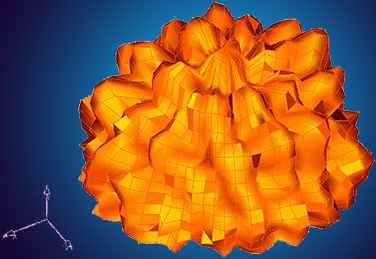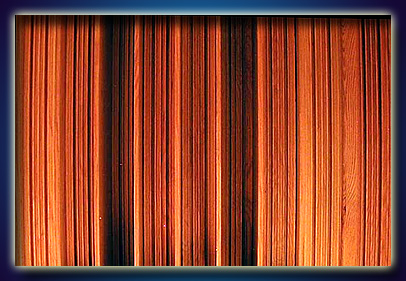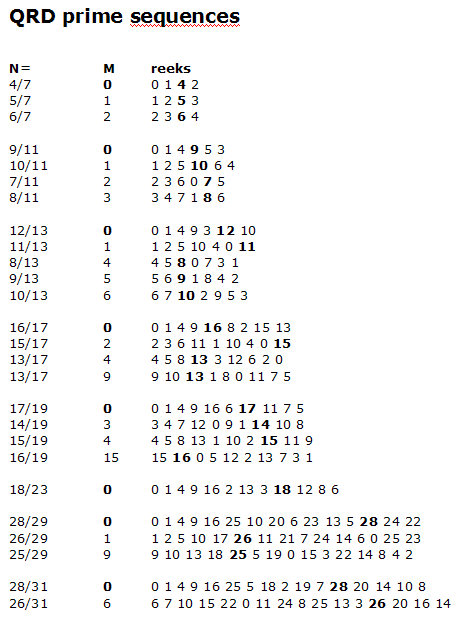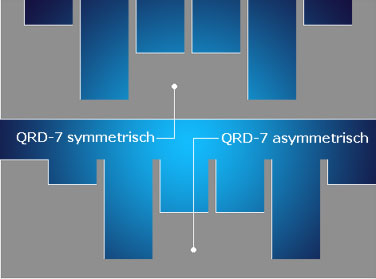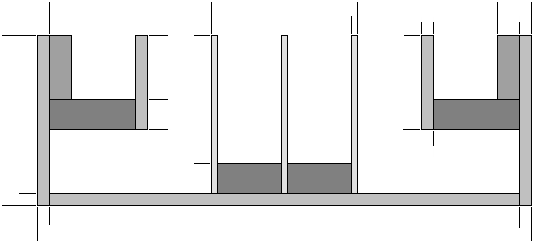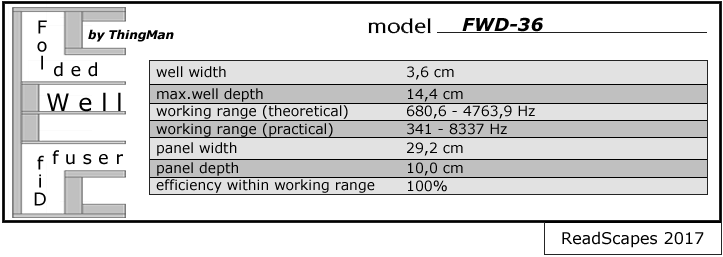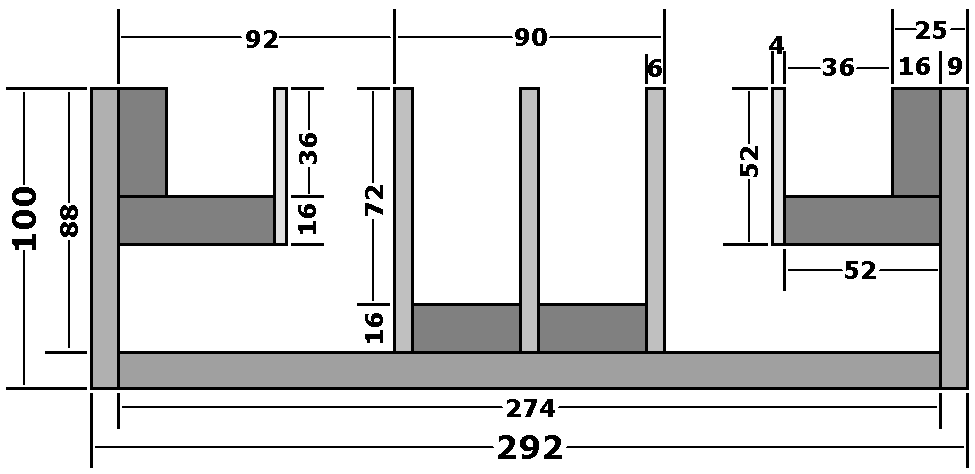good-to-knows...
We must get a
bit technical now, in order to
better understand QRD design.
The N=number, the well-width, the maximum well-depth
and the chosen depth-sequence (M-number) are
essential designparameters for any QRD diffuser.
For a more technical and detailed article on design
and designparameters you may read:
"Evaluating
specifications and characteristics of QRD-Diffusers".
This article, in conjunction with the one you are
reading now, has everything there is to know about
simple yet very efficient acoustic diffusion at home.
The N-number
of the
diffuser defines the number of wells per
period.
The
higher the N-number, the wider the working
range will be.
A correctly designed QRD-7
has a maximum working
range of 3,75 octaves, regardless
of any choice of other design parameters.
Well-width
defines the
upper frequency limit of the working range.
Narrow wells will result in a high upper
frequency limit.
This parameter is inextricably connected to
the chosen N-number: identical well-widths will
result in different upper limit frequencies when
a different N-number is chosen.
The maximum
well-depth defines
the lower frequency limit of the working
range.
Deep wells will result in a low bottom-end
frequency limit.
This parameter is also connected to the
chosen N-number:
identical maximum well-depths
will result in different lower frequency
limits when a different
N-number is chosen.
The chosen
depth-sequence (M-number)
defines depth and order of the various wells.
Each
N-number is accompanied by various depth-sequences.
Each of them will result in a
slightly different working range, which
always has a bandwidth of 3,75 octaves max.
Some N-numbers have only 2 or 3 depth-sequences,
others have 6 or 7, as you have read in the
table with prime sequences.
A designer chooses one of the available depth-sequences
within a given N-number.
Limitations...
To put it bluntly:
One cannot combine very narrow wells (to obtain a
high upper frequency limit) while at the same time
make those wells very deep so you can achieve a
deeper low-end limit of that working range.
It would be nice to create a very wide working range
this way, but it will not work out fine...
The thing is, within
those very narrow and very deep wells new unwanted
reflections, resonances and coloration will originate,
making the whole assembly quite useless for diffuser
purposes.
Correct
proportions between well-width
and maximum well-depth must be resprected to get a
succesful diffuser design, and therefore these
proportions are a crucial design parameter.
This proportion is related to the chosen N-number.
With a QRD-7 and a PRD-7 the
proportion is 1:4 maximum.
This
will result in a 100% efficiency benchmark that
corresponds, with a QRD-7, to a working range of 3,75
octaves.
A PRD-7 has a working range of 3,25 octaves at 100%
efficiency.
For example:
if you choose to apply a well-width of 5 cm, the
maximum well-depth will than be 5 x 4
= 20 cm.
If 20cm wouldn't suffice to meet a planned bottom-end
of the working range, you can choose a higher max.
well-depth of, let's say, 30cm.
30 cm divided by 4
results in a well-width of 7,5cm
which, in turn, will result in
a significantly lower limit for
high frequencies.
Yet in both cases we're dealing with a design of 100%
efficiency. Only the working ranges shift, defined by
either well-width or max. well-depth.
Choosing one always has consequences for the other.
Plan - example
On the right an example of a QRD-7
plan.
Reading and interpreting it is probably no problem
now, when you have read this article up to this point.
The deepest well
in this example has been folded once to save space
and materials, yet the specs remain the same, with
or without folding.
This model is the FWD-36 diffuser, part of a family
of diffusers found elsewhere on this site.
This -36 is a fine allround diffuser!
Anti-flutter strip or Diffuser?
An FWD-36 diffuser has a well-width
of 36mm,
making it an allround diffuser with regard to the
working range.
When the well-width of a
QRD-7 drops under 25mm
it
shouldn't be called a diffuser
anymore. A well-width of 25mm or less positions it in
the category of "anti-flutter
strips" of which 2 exponents are
shown on the right, a bit upward.
These are not really diffusers, because their working
range far exceeds the part of the frequency spectrum
where the fundamentals are found (which is up to a
little over 4kHz / c5 on the piano)
A well-width smaller than
25 to 30mm will position the upper frequency
limit of a QRD-7 a lot higher than the
top-end of the fundamentals range (a
little over 4000Hz.)
Such a QRD-7 can do wonders in eliminating local
flutter-echo and other
high pitched reflection problems
that are often a local phenomenon in a given room.
Such acoustic aids are referred to as "anti-flutter
strips".
The width of the fins -
6 and 4 mm combined in this example plan - should
never exceed 1/4 of the well-width.
Changing one dimension in the design will always have
an influence on other dimensions. Some of them can be
successfully compensated, like the width of the top-
and bottom plates or even the backwall.
Other dimensions, most likely
the maximum well-depth, can get
compromised, depending on the part(s) you plan to
modify.
Better also read the technical article, proposed here
earlier, before trying to alter a design.
TOP



